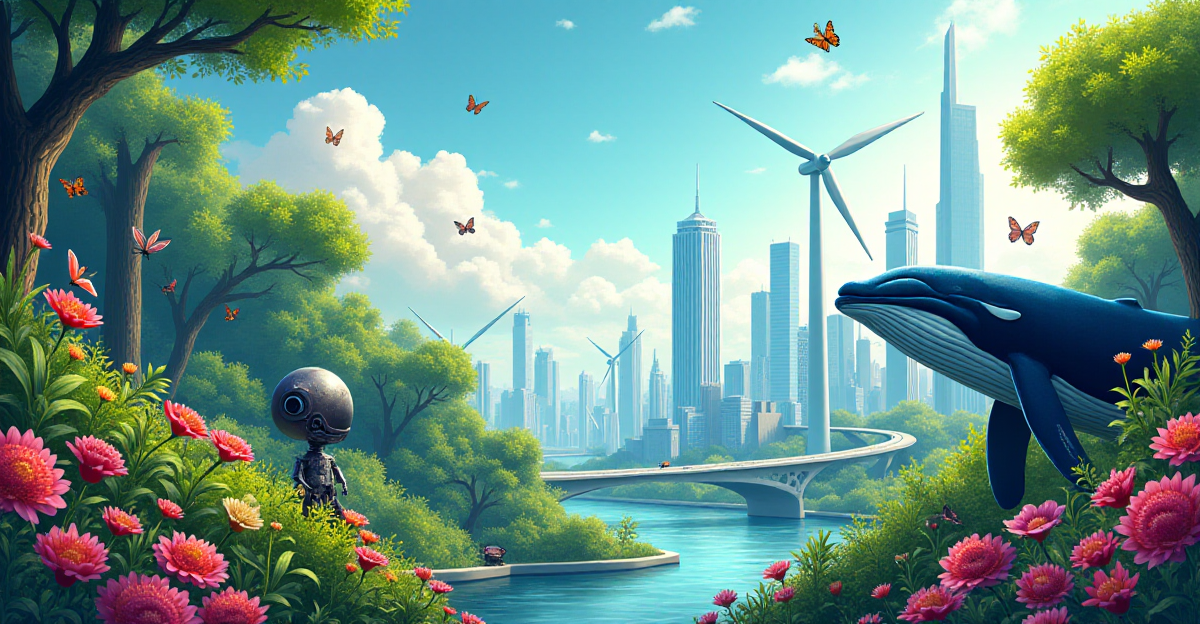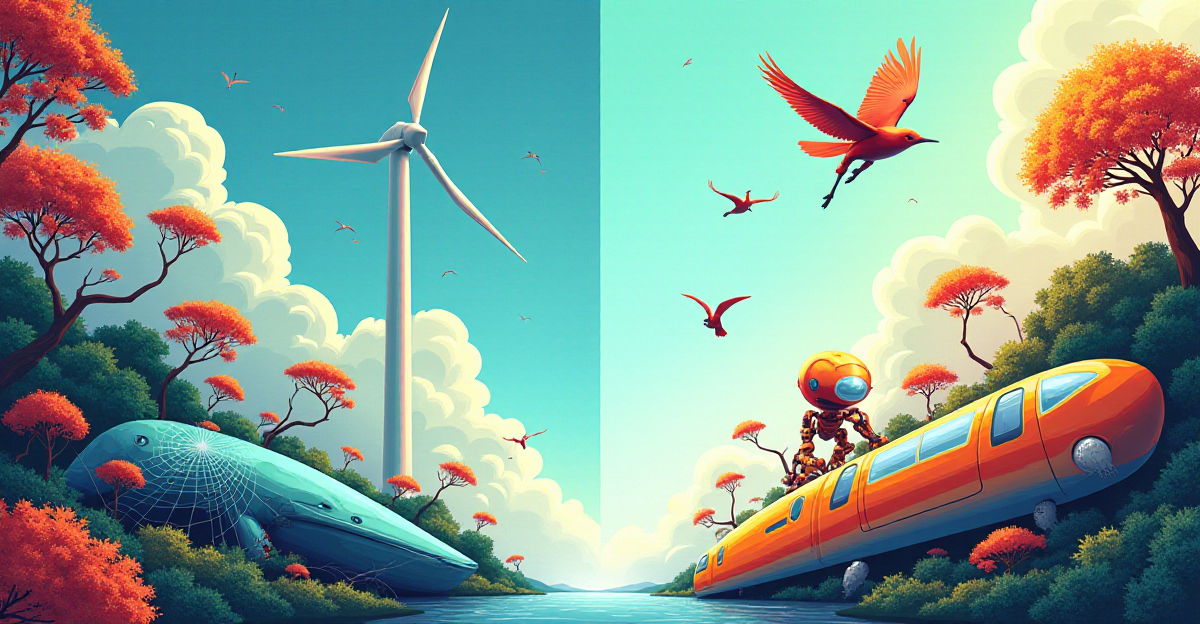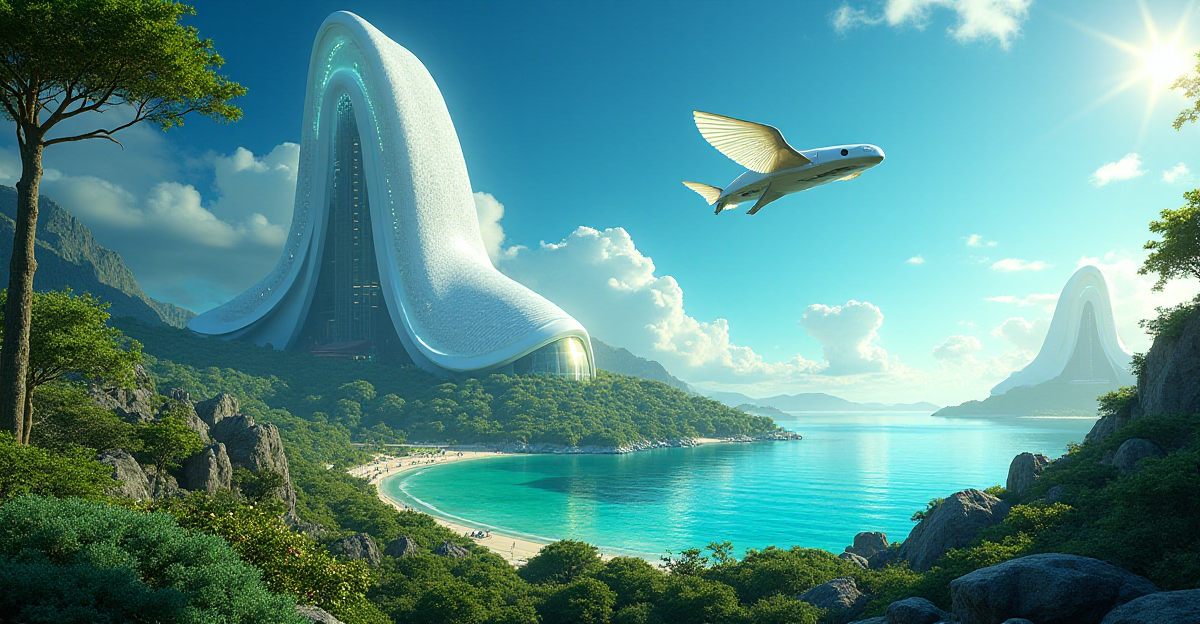Biomimicry is the technique of solving human issues by means of natural designs and ideas. Examples of biomimicry in contemporary technology will be discussed in this paper together with how our future developments are being shaped by looking to the natural world.
Table of Contents
- What Is Biomimicry?
- Examples of Biomimicry in Technology
- Why Biomimicry Matters
- How Biomimicry Is Shaping the Future of Technology
What Is Biomimicry?

Have you ever found great delight in the delicate architecture of a spiderweb or the simple elegance of a bird in flight? Nature is a master engineer, always changing and inventing. Learning from and copying nature’s clever ideas and techniques to address human challenges is known as biomimicry. It’s about seeing the natural world and using its ecosystems, structures, and functions to inspire fresh technologies and design. We are essentially using the blueprints of nature to construct a better future.
Understanding Biomimicry
A quite recent method of problem-solving that has attracted a lot of interest lately is biomimicry. Although we have always found inspiration in the natural world, biomimicry advances this by methodically examining how naturally occurring species have developed over millions of years to overcome obstacles and fit their habitats. This method stresses the need of knowing the fundamental ideas of nature’s answers, which may then be applied into creative and sustainable technologies.
Nature-Inspired Solutions
Drawing on the natural world, biomimicry closes the distance between nature and technology. Learning to replicate nature’s designs will help us to generate innovative ideas in this interesting mix of science, engineering, and art. Inspired by the flippers of the humpback whale, the Enercon E-126 wind turbine is a prime illustration of this mix. Designed with tubercles, like those seen on whale flippers, the turbine blades help to lower drag and boost lift, therefore producing more effective energy. This is only one instance of how biomimicry may use natural resources to produce creative and sustainable solutions.
Biomimicry: A New Era of Innovation
Some of the most urgent problems facing humanity have natural answers provided by biomimicry. Let’s look at few instances:
- Self-Healing Materials: Imagine structures that can automatically repair cracks or bridges that can heal themselves. This isn’t science fiction; it’s biomimicry in action. Scientists are mimicking the remarkable self-repair abilities of certain plants and animals to develop materials that can repair damage, extending their lifespan and reducing waste. These advanced technologies have the potential to revolutionize construction, infrastructure, and even medicine. Scientists are working to create self-healing concrete by embedding microcapsules filled with healing agents into the concrete. When a crack appears, the capsules break open, releasing the healing agents that seal the crack. Similarly, researchers are developing self-healing polymers for use in aerospace, automotive, and biomedical applications.
- Gecko Feet: The gecko’s ability to climb smooth surfaces effortlessly has inspired the development of adhesives that can stick to almost any surface without leaving residue. This technology has diverse applications in robotics, manufacturing, and healthcare. For example, gecko-inspired adhesives are being used to develop robots that can climb walls and inspect infrastructure, as well as to create bandages that adhere perfectly to skin without the need for harsh chemicals. Researchers are also exploring the use of gecko-inspired adhesives in medical devices, such as minimally invasive surgical tools.
Biomimicry is evidence of the knowledge ingrained in the designs of nature. It reminds us that the natural world has much to teach us and that many of our contemporary problems can be solved by means of it. When we are confronted with a dilemma, we should find inspiration in the natural world since a solution might have been there always.
Examples of Biomimicry in Technology

Imagine a world in which adhesives attach as fiercely as a gecko’s foot, buildings can mend themselves like skin, and airplanes are as aerodynamic as birds. This is not science fiction; rather, it is the reality of biomimicry, a discipline of invention inspired by the exquisite designs of nature to address human challenges. Rather than merely mimicking nature, biomimicry explores the fundamental ideas behind how natural species have developed and applies these ideas to design sustainable solutions.
Let’s investigate some instances of how we can be drawing lessons from nature to shape a better future.
Learning From Nature’s Masters: Biomimicry Applications
Nature is a treasure store of clever ideas refined over millions of years through evolution. From the complex architecture of a spiderweb to the aerodynamic beauty of a bird in flight, nature provides a rich source of ideas for technical development. Nature’s effective designs teach us many lessons.
Amazing Examples of Nature-Inspired Innovations
Have you ever considered how much more efficient wind farms might be? Inspired by humpback whales, engineers have found On their flippers, these magnificent animals feature distinctive tubercles—bumps. These tubercles improve lift and lower drag, therefore improving the whales’ swimming efficiency.
Inspired by this, engineers created astonishingly beautiful wind turbine blades with tubercles. One of the first turbines to use biomimicry, the Enercon E-126 wind turbine boosted energy output and lowered noise pollution, therefore rendering wind energy even more sustainable and environmentally beneficial. This design is only one instance of how biomimicry may inspire energy industry creativity.
Imagine now a world in which sidewalk cracks self-healed. For millennia, plants and animals have been doing this; today, scientists are copying their skills. Self-healing concrete produced by University of Illinois researchers can independently fix cracks. Embedded within the concrete, this nature-inspired approach employs microcapsules loaded with a therapeutic ingredient. The healing agent is released when a fracture shows through the capsules, therefore closing the crack and stop more harm. Infrastructure maintenance and building might be transformed by this biomimetic technology.
Inspired by the kingfisher’s beak, design has likewise advanced remarkably. Their simplified beak enables these birds to plunge into water with little effort. The form of the fast Shinkansen bullet train used in Japan was influenced by this natural design. By lowering air resistance and noise pollution, this invention made the train more passenger-comfortable and efficient.
Furthermore inspiring innovative developments in adhesive technology is the gecko’s easy climbing of flat surfaces. For years, researchers have been examining gecko feet in order to better grasp their amazing adhesive power. Setae, little hairs on their feet, enable geckos to adhere to surfaces.
Inspired by this, scientists have created gecko-inspired adhesives devoid of residue that can cling practically any surface. Applications of this technology abound in manufacturing, robotics, and medicine. Gecko-inspired adhesives, for instance, are being utilized to manufacture bandages that fit precisely to skin and to build robots able to scale buildings and examine infrastructure.
One evidence of the potency of nature’s designs is biomimicry. Increasing knowledge of biomimicry will enable us to design a more sustainable future. Visit the Biomimicry Institute website to find further information about biomimicry and how you could become involved.
Why Biomimicry Matters

Have you ever found great wonder in the complex natural designs? From the delicate wings of a butterfly to the complex structure of a honeycomb, nature has a lot to teach us about innovative designs and problem-solving. Inspired by the natural world, biomimicry is a fascinating discipline creating sustainable technologies to solve some of mankind’s most important problems. It’s about using millions of years of evolution’s teachings to build a more harmonic and sustainable future.
Biomimicry stresses the ability of nature and technology cooperating. Examining the complex designs of plants, animals, and ecosystems helps us to find hidden patterns and ideas that might transform our approach to solve problems in many spheres including engineering, medicine, architecture, and energy.
How Biomimicry Works
Inspired by the form of an owl’s wing, quieter airplanes developed are among the most well-known instances of biomimicry in use. Because of their unusual feather structure—soft, velvety fringes line them—owls are masters of quiet flight. These fringes break up the sound waves generated by the owl’s wings, making their flight virtually silent. Scientists have developed unique noise-reducing surfaces for airplanes by copying this design, therefore minimising not only noise pollution but also the effect of air travel on local residents and wildlife.
Inspired by the amazing capacity of the human body to cure itself, self-healing materials represent still another fascinating development. Our skin’s complex network of cells and fibers cooperatively repairs tissue and heals wounds. Researchers are now copying this process to produce materials that, like human skin heals following a cut, can heal themselves after injury. Imagine a time when buildings, bridges, even spacecraft could fix themselves automatically, hence lowering the demand for expensive repairs and downtime.
It’s about comprehending the ideas behind nature’s creations and applying them to address our challenges, not only about mimicking her. Just a few of the many ways biomimicry is already transforming the planet are a lotus flower with its self-cleaning surface or wind turbines modeled by humpback whale fins. More environmentally friendly and efficient than conventional technology are these solutions proving to be.
Ever wonder how plants thrive in the desert with hardly any water? These plants’ resilience can provide us many lessons on water management. Using the wisdom of nature will help us to build a future in which human creativity and natural invention coexist. Let’s explore further the field of biomimicry in order to find new opportunities and beauties.
How Biomimicry Is Shaping the Future of Technology

Imagine a world in which buildings fix themselves, aircraft fly as silently as owls, and wind farms replicate the efficiency of humpback whales. These are not dreams; rather, they are the reality that biomimicry, the technique of drawing lessons from nature, is realizing. Through study and imitation of the creative ideas found in nature, we can release transforming ideas and build a more harmonic and sustainable future.
Learning from Nature
Why a hummingbird can hover mid-air, apparently defying gravity, has you ever wondered? Or how might a spider create a web so robust and strong? These are just a handful of the amazing achievements that over millions of years nature has accomplished. Inspired from millions of years of natural development, biomimicry presents a fresh perspective to solve problems by looking to nature’s designs. In disciplines including architecture, engineering, medicine, and energy, nature is a treasure store of nature-inspired solutions just waiting to be discovered.
A New Era of Innovation: Real-World Applications of Biomimicry
Imagine a bridge able to instantly heal following harm! Though inspired by the amazing self-healing powers of the human body, this is not science fiction. Self-healing materials developed by scientists resemble how human skin heals following a cut. Bridges, buildings, and even spaceships are being built using the idea to cut expenses and downtime while pushing technology.
Consider the lotus bloom with its self-cleaning surface. Dirt and dust accompany water droplets as they bead up and roll off, leaving the surface flawless. Inspired by this amazing phenomena sometimes referred to as the Lotus Effect, coatings that reject dirt and water have been developed. These coatings find utility in wind turbine blades, building facades, even self-cleaning fabrics.
Biomimicry is a useful method for tackling pragmatic issues. Looking to nature helps us to design a future whereby buildings are more sustainable, renewable energy is more efficient, and our influence on the environment is lessened. Come explore the fascinating field of biomimicry with us and learn how nature might impact technology going forward!











